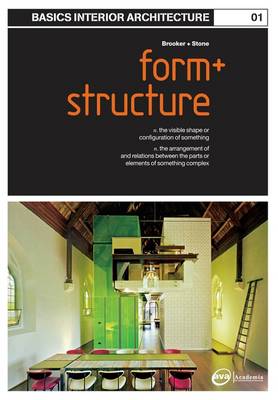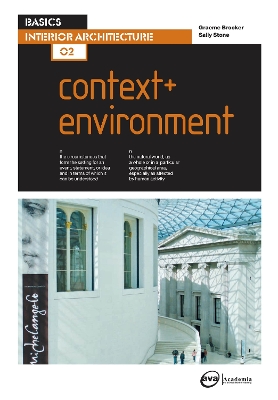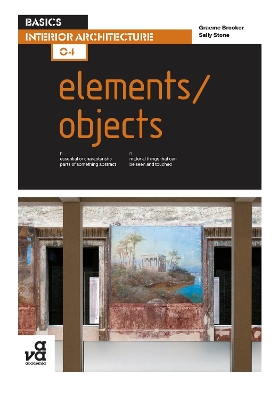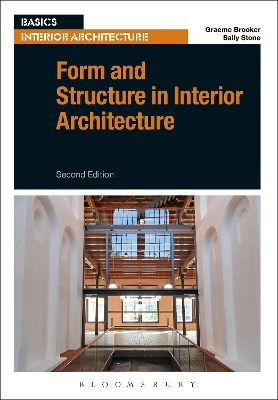Basics Interior Architecture
3 primary works • 4 total works
Book 1
Basics Interior Architecture 01: Form and Structure
by Graeme Brooker and Sally Stone
Published 26 November 2007
The subject of interior architecture currently lacks a detailed and educationally focussed text. The new "Basics Interior Architecture" series will fill this gap, and expand students knowledge of interior design/interior architecture and give an insight into some of the principles and methods of professional interior architects. The first book in the "Basics Interior Architecture" series, "Form & Structure" will propose a method of analysis, understanding and exploitation of the existing building that can be used to realise the design of a new insertion.
Book 2
Basics Interior Architecture 02: Context & Environment
by Graeme Brooker and Sally Stone
Published 15 September 2008
Basics Interior Architecture 02: Context & Environment proposes a method of design based on the interpretation, evaluation and utilization of physical factors, such as light and orientation, the contextual issues of the urban form and the subject of sustainability. It examines the ways each of these factors influences the form of the interior.
The text is supported by detailed studies of contemporary work, alongside activities and resources.
The text is supported by detailed studies of contemporary work, alongside activities and resources.
Book 4
Basics Interior Architecture 04: Elements / Objects
by Graeme Brooker and Sally Stone
Published 1 January 2009
Basics Interior Architecture 04: Elements/Objects explores the manner in which an interior space can be manipulated through the precise placement of forms.
The book describes the principles underpinning the design of objects, and their placement within the interior space. It also discusses the influence that this has upon the character and perception of the space; providing focus or rhythm, controlling visual movement or expressing scale.
The book teaches readers how the manipulation of objects and elements can create interior spaces of distinctive and apposite qualities.
The book describes the principles underpinning the design of objects, and their placement within the interior space. It also discusses the influence that this has upon the character and perception of the space; providing focus or rhythm, controlling visual movement or expressing scale.
The book teaches readers how the manipulation of objects and elements can create interior spaces of distinctive and apposite qualities.
Form and Structure in Interior Architecture examines the basic ideas that underpin the design of interior space: From the establishment of a relationship between the existing building and the new components that inhabit it, to the design and positioning of significant elements within the space itself.
Through a series of groundbreaking case studies from around the world, this book proposes a method of analysis, understanding and exploitation of the existing building. Studies of contemporary work engage and stimulate, while clear diagrams and explanations allow students to understand and relate to the works in the context of architecture and interiors as a wider field.
The second edition includes a new chapter on sustainable interior architecture. This brings the book up to date by covering current thinking about the importance of sustainability in architectural design.
Through a series of groundbreaking case studies from around the world, this book proposes a method of analysis, understanding and exploitation of the existing building. Studies of contemporary work engage and stimulate, while clear diagrams and explanations allow students to understand and relate to the works in the context of architecture and interiors as a wider field.
The second edition includes a new chapter on sustainable interior architecture. This brings the book up to date by covering current thinking about the importance of sustainability in architectural design.



